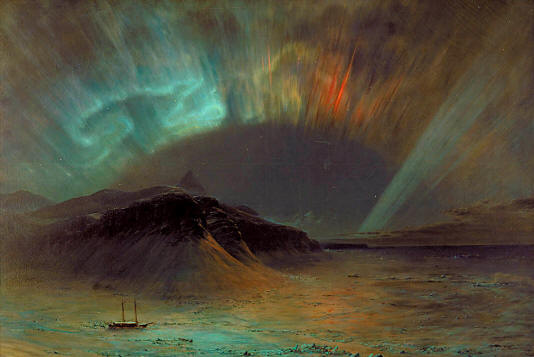
Aurora Borealis by Frederic Edwin Church (1865).
Smithsonian American Art Museum, Washington, United States of America.
http://www.thunderbolts.info/tpod/00current.htm�We know that there have been more than 30 reversals of the earth�s magnetic field in the last 10 million years. Associated wandering of the magnetic poles would have resulted in periods when the aurora was seen much more frequently at mid-latitudes than is the case today. Consequently, it is not unreasonable to suppose that Stone Age man gazed with concern at flickering auroral lights and perhaps recorded them in his art.�
This view is endorsed by members of NASA�s THEMIS team, who concluded from this type of rock art that aurorae �have influenced the course of history, religion, and art� from prehistoric times. Other specialists on the polar lights have also speculated �that a great deal of the very ancient engravings which have been found in several grottos along the Mediterranean Sea are in fact pictorial representations of the northern light.�
Moving beyond speculation, a recent comparison with the observed behaviour of high-energy-density plasmas in laboratory, in space and according to particle-in-cell (PIC) simulations suggests that not only some of the French and Spanish cave paintings of the Cro-Magnon era may include auroral motifs, but also the worldwide impressions on rock, typically exposed to the open air, that proliferated from the end of the Palaeolithic and throughout the Neolithic period, roughly from 11,000 BCE to 3,000 BCE, though in many places continuing into later periods. Rupestral art as a whole appears as one monolithic witness to the possibility that awe-inspiring plasma filaments painted their characteristic nonfigurative images in the firmament first.
Contributed by Rens Van Der Sluijs